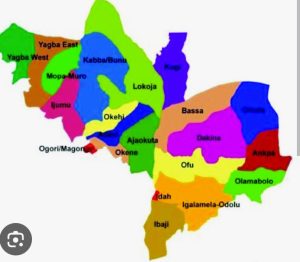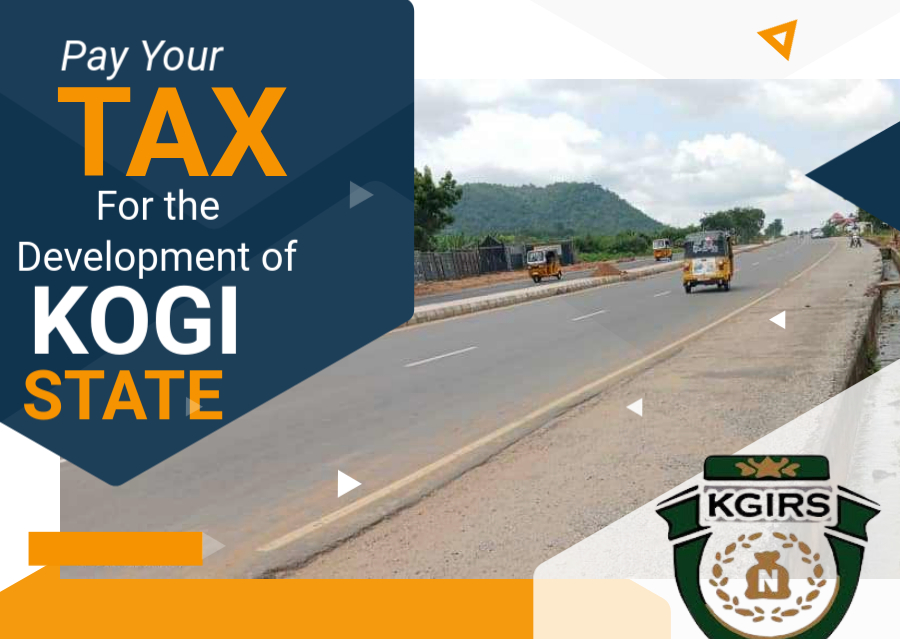

By Dada Ahmed.

(C) ResearchGate.
Thirty-four years may appear short in the life of a nation or state, yet it is long enough to take stock, reflect on achievements, examine setbacks, and chart a course for the future. For Kogi State, created on August 27, 1991, the journey has been a blend of triumphs and trials, hope, promise and unfulfilled potential. Known as the Confluence State,because it is where the great rivers Niger and Benue meet,Kogi is strategically located at the very heart of Nigeria. Its story, since creation, mirrors the complexities of Nigerian federalism, the struggles of leadership, and the resilience of its people.
The creation of Kogi State from the old Kwara and Benue States was more than an administrative exercise. Political analysts describe it as an attempt to give identity, belonging, and autonomy to a people long yearning for recognition. The new state inherited a rich diversity of ethnic groups,Igala, Egbira, Okun (Yoruba), Bassa, Nupe, Kakanda, Ogori, and many others,woven together by geography but often divided by politics.
From the onset, the dream was to build a state where diversity would be a source of strength, and where resources,agriculture, solid minerals, and human capital,would be harnessed for collective prosperity. The founding years, however, revealed the deep challenges of forging unity in diversity.
The early years were largely experimental. Military administrators in the 1990s focused on laying foundations: building government structures, creating ministries, and attempting to balance ethnic interests in appointments. Some progress was made, but the absence of democratic participation limited accountability. The people looked to civilian rule with hope that democracy would bring development closer.
Since 1999, civilian administrations have dominated the political landscape. Each came with promises,industrial revival, agricultural transformation, job creation, improved education, healthcare, and infrastructure. To their credit, successive governments made strides in road construction, school establishment, and rural electrification. Lokoja, the state capital, grew from a sleepy town into a bustling city.
Yet, the story is not without challenges. The struggle for power rotation among the three senatorial districts has sometimes overshadowed the focus on development.
One of Kogi’s defining challenges has been the politics of identity. The state’s politics often reflects the push and pull of ethnicity. At times, this has enriched democracy by ensuring no group monopolizes power. At other times, however, it has bred suspicion, rivalry, and division. The unity question remains central: Can the state’s leaders rise above sectional interests to pursue a collective agenda? Thirty-four years on, this remains one of the greatest tests of governance in the Confluence State.
The education sector offers a mixed picture. From primary schools in rural areas to tertiary institutions like Prince Abubakar Audu University, Confluence State University of Science and newly established Technology, CUSTECH,Osara, and state-owned university in Kabba, access to education has expanded. Enrollment has improved, but overcrowded classrooms, inadequate funding, and brain drain among teachers remain serious challenges.
Healthcare tells a similar story. General hospitals and primary health centres dot the landscape, but experts stress the need for improved access to quality healthcare, especially in rural areas, where many residents still rely on private clinics or traditional medicine.
Infrastructure development has seen some successes. Roads and bridges have been built, linking rural communities to markets and urban centres. Yet, many rural roads have fallen into disrepair and in dire need of better shape. While Lokoja has grown over the years, issues of the desired urban planning, effective waste management, and more amenities require urgent government attention.
The economy and industry sector is where Kogi’s paradox is most glaring. Blessed with deposits of iron ore, limestone, coal, and other minerals, the state ought to be an industrial hub. The Ajaokuta Steel Complex, envisioned as Nigeria’s industrial backbone, remains largely dormant,an enduring metaphor for unfulfilled dreams.
Agriculture,yam, cassava, cashew, rice, maize, and fisheries continues to sustain much of the population, but mechanization and value addition remain limited.
Security remains both a challenge and a measure of resilience. Like many states in Nigeria, Kogi has had its share of communal clashes, armed robbery, kidnapping, Yet, relative peace has been maintained through the efforts of the state government,security agencies and community vigilantes. Still, insecurity reflects deeper socioeconomic problems: unemployment, poverty, and weak local governance.
Perhaps Kogi’s greatest tragedy is not in what has been done, but in what has not been done. With its central location, mineral wealth, fertile land, and vibrant population, many believe Kogi could by now have become Nigeria’s industrial hub if the Ajaokuta Steel Project, conceived over 40 years ago, had become a reality.
As Kogi marks 34 years, the big question is: What next? Concerned Kogites anchor the future development of Kogi State on persistent leadership that is visionary, inclusive, and courageous,qualities the current administration under Governor Ahmed Usman Ododo must continue to maintain and nurture to better fruition. The administration has made commendable efforts, but more needs to be done.
There is a pressing need to build greater trust among ethnic groups and foster a shared identity.
Economic diversification should be pursued by reviving industries, unlocking solid minerals, and promoting agro-processing. Education and youth empowerment must continue to receive priority through investments in skills, technology, and innovation to prepare the next generation for global competitiveness. Infrastructure sustainability is critical, constructing new roads is an aspect of good governance but emphasis should also be placed on maintaining and upgrading existing ones. Healthcare, particularly in rural communities, deserves renewed investment.
The current administration has improved on what it inherited from the immediate past government,led by Alhaji Yahaya Adoza Bello but deeper reforms are needed in the security sector to address the root causes of crime by tackling unemployment and strengthening community policing.
In the final analysis, Kogi State at 34 tells a story of survival and resilience, but also of missed opportunities. The confluence of the Niger and Benue, which the state represents, symbolizes unity and strength.
The dream of the founding fathers,and of the present generation of Kogites, is that if the next three decades are guided by vision, inclusiveness, and accountability, Kogi can finally fulfill its destiny as a true Confluence of Opportunities, not just in name, but in reality.
The challenge is for leadership and citizens alike to reflect that symbolism in governance and daily life.
Dada Ahmed, a retired Assistant Editor-In-Chief in NAN,and a Kogite, publishes The Reporters.

